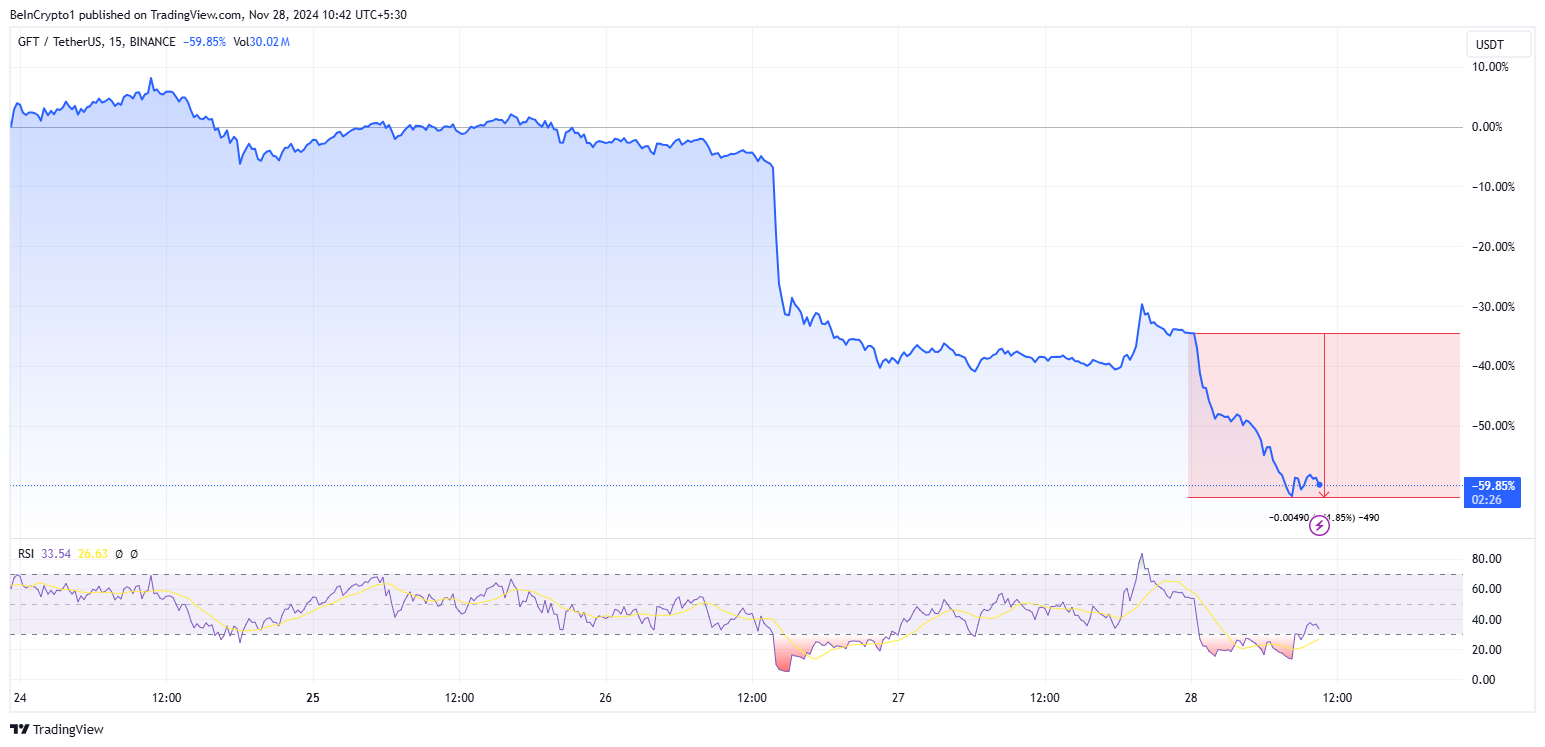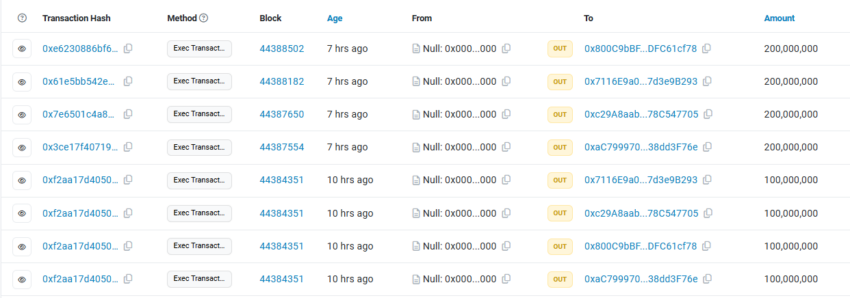Gifto faces backlash following its recent move to mint and dump GFT tokens into the market. On November 26, Binance announced that it would delist the GFT/USDT trading pair on December 10, 2024.
The delisting, part of Binance’s broader decision to remove eight altcoin spot trading pairs, has already sent shockwaves through the market.
Gifto’s Controversial GFT Token Dump
The immediate aftermath of the Binance’s delisting announcement on Tuesday was swift and severe. In what could only be ascribed to a sharp decline in investor confidence, the GFT token’s price dropped by approximately 25%. Expectedly, delistings from major exchanges like Binance often trigger panic selling as liquidity and accessibility to the asset decrease.
Adding fuel to the fire, on Thursday, Web3 data analysis tool Lookonchain implicated Gifto in a significant token dump. According to the blockchain analytics firm, the Gifto team minted 1.2 billion GFT tokens, valued at roughly $8.6 million, within an eight-hour window. These tokens were then deposited into exchanges, coinciding with an alarming 40% drop in GFT’s market price.
“On Nov 26, Binance announced it would delist GFT on Dec 10, 2024. The Gifto team minted 1.2 billion GFT ($8.6 million) in the past 8 hours and deposited it into exchanges. Gifto may have dumped these tokens onto the market, and the price of GFT has dropped by ~40%,” Lookonchain revealed.
The timing of this mint-and-dump operation has raised eyebrows. Many in the crypto community perceive it as an opportunistic exit strategy, further eroding trust in the token. One user on X (formerly Twitter) criticized Gifto’s actions.
“Getting delisted and dumping tokens on holders… classic web2 move. This is why we need decentralized projects that can’t pull this type of exit bs. Stick to real DeFi,” the user noted.
Broader Implications of Binance Delistings
Binance’s decision to delist GFT and seven other altcoins reflects a growing trend in the cryptocurrency space. Exchanges continuously evaluate and remove underperforming or problematic tokens. The assets set to be delisted alongside Gifto include IRISnet (IRIS), SelfKey (KEY), OAX (OAX), and Ren (REN).
Delistings often have profound consequences for affected tokens. Beyond immediate price declines, they face reduced liquidity, diminished market confidence, and barriers to entry for potential investors. In some cases, the token’s long-term viability comes into question as it loses the visibility and trading volume that exchanges like Binance provide.
For Gifto, the combination of the delisting and the controversial token dump has created a perfect storm. It leaves its community in disarray. Retail investors, often the last to react, find themselves at a disadvantage as prices plummet and large token holders offload their positions.

The unfolding Gifto saga highlights critical vulnerabilities in the crypto ecosystem. Centralized control over token minting and allocation can lead to events like this. When trust is undermined, retail investors bear the brunt of poor decision-making.
This episode also serves as a cautionary tale about the risks of holding tokens overly dependent on centralized exchanges. With the rise of decentralized finance (DeFi) and decentralized exchanges (DEXs), there is growing momentum toward more transparent and resilient alternatives. For now, GFT holders face an uncertain future, with December 10 looming as a critical date.
Disclaimer
In adherence to the Trust Project guidelines, BeInCrypto is committed to unbiased, transparent reporting. This news article aims to provide accurate, timely information. However, readers are advised to verify facts independently and consult with a professional before making any decisions based on this content. Please note that our Terms and Conditions, Privacy Policy, and Disclaimers have been updated.
Credit: Source link




